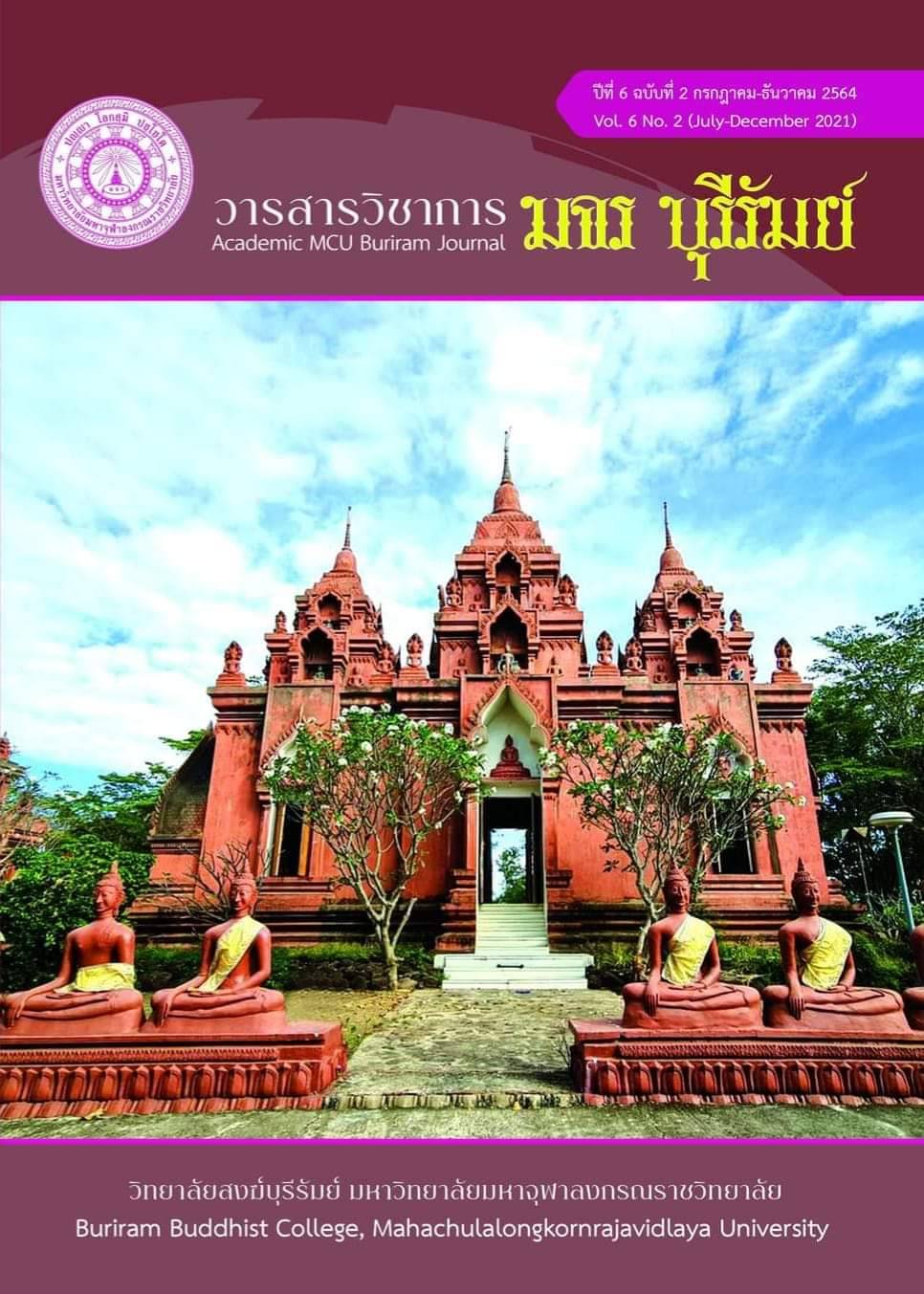An Analytical Study of Beliefs and Rituals in the San Don Ta Merit of People in Surin Province
Keywords:
Beliefs, Rituals, San Don Ta MeritAbstract
The objectives of this research paper were 1) to study beliefs and rituals of making merit in Buddhism, 2) to study of San Don Ta merit of people in Surin province and 3) to analyze the beliefs and rituals in the San Don Ta merit of people in Surin province.This research was a qualitative research and accompanying interviews. Then, it is the presentation of research results by describing analytical methods.
The results of research found that:
Beliefs and rituals of making merit in Buddhism, that is the behavior that human beings follow their beliefs, faith in their religion that has been passed down from generation to generation until it has become a religious practice rituals. It is considered a worship or ceremonial activity. Most of those rituals are related to daily life. The San Don Ta merit of Khmer descent people in Surin province, there is a belief in supernatural powers and mystical powers especially the belief in ancestral spirits that there is still a circle around and taking care of family and members. This ancestral spirit can give you and blame your family and members. The San Don Ta ceremony of Khmer descent people in Surin province falls on the 14th day of the waning day of the 10th lunar month every year, when it reaches an important period of the tradition. Family and grandchildren, brothers and sisters and relatives tend to give importance to ceremonies of San Don Ta. There are 3 aspects: (1) organizing in one's own home, (2) organizing in the community for ceremonies, (3) organizing merit, there are steps in the temple for dedication of merit according to the Buddhist model, which are (1) communication to the offspring to inform them in advance, (2) determining the place of ceremony, (3) preparing items for offering sacrifices and (4) going to the temple to make merit to dedicate the merit to the deceased person.
References
พระเฑียรวิทย์ อตฺตสนฺโต (โอชาวัฒน์). (2548). การศึกษาความเชื่อและพิธีกรรมทางพระพุทธศาสนาของร่างทรง: กรณีศึกษาในเขตกรุงเทพมหานคร. วิทยานิพนธ์ศาสตรมหาบัณฑิต. มหาวิทยาลัยมหาจุฬาลงกรณราชวิทยาลัย.
มหาวิทยาลัยมหามกุฏราชวิทยาลัย. (2525). พระไตรปิกฎภาษาไทย ฉบับมหามกุฏราชวิทยาลัย พิมพ์เนื่องในวโรกาสครบ 200 ปี แห่งกรุงรัตนโกสินทร์ พุทธศักราช 2525. กรุงเทพมหานคร: มหาวิทยาลัยมหามกุฏราชวิทยาลัย.
ยโสธารา ศิริภาประภากร. (2558). ศึกษาแนวทางการบูรณาการคติธรรมทางพระพุทธศาสนาที่ปรากฏในประเพณีสารท โฎนตากับหลักสูตรสถานศึกษากลุ่มสาระสังคมศึกษา ศาสนา และวัฒนธรรมตามหลักสูตรแกนกลางขั้นพื้นฐาน พุทธศักราช 2551. สำนักงานคณะกรรมการการศึกษาขั้นพื้นฐาน.
ยโสธารา ศิริภาประภากร. (2561). ประเพณีแซนโฎนตา: วัฒนธรรมประเพณีของชาวไทยเชื้อสายเขมร จังหวัดสุรินทร์. วารสารหาดใหญ่วิชาการ, 16(2), 247.
เรณู เหมือนจันทร์เชย. (2541). การศึกษาอิทธิพลความเชื่อประเพณีและพิธีกรรมของชาวไทยโซ่งที่มีผลต่อการพัฒนาคุณภาพชีวิต: กรณีศึกษาหมู่บ้านแหลมกระเจา 2 ตำบลลำลูกบัว อำเภอดอนตูม จังหวัดนครปฐม. วิทยานิพนธ์ศิลปศาสตรมหาบัณฑิต สาขาวิชาพัฒนาชนบทศึกษา. มหาลัยมหิดล.
ราชบัณฑิตยสถาน. (2546). พจนานุกรม ฉบับราชบัณฑิตยสถาน. กรุงเทพมหานคร: บริษัท นานมีบุ๊คส์พับลิเคชั่น.
ศิริพร สุเมธารัตน์. (2553). ประวัติศาสตร์ท้องถิ่นเมืองสุรินทร์. คณะมนุษย์ศาสตร์และสังคมศาสตร์: มหาวิทยาลัยราชภัฏสุรินทร์. โรงพิมพ์ ส.พันธ์เพ็ญ.
สมพร เกษมสุขจรัสแสง. (2526). การผสมทางวัฒนธรรมของลาวโซ่ง หรือไทยโซ่ง. สุรินทร์: มหาวิทยาลัยราชภัฏสุรินทร์.
สมิทธ์ สระอุบล. (2544). มานุษยวิทยาเบื้องต้น. พิมพ์ครั้งที่ 1. กรุงเทพมหานคร: สำนักพิมพ์โอเดียนสโตร์.
สีมา อนุรักษ์. มรดกอีสาน ประเพณีและวิถีชีวิต. กรุงเทพมหานคร: ซีแอนด์เอ็น. ม.ป.ป.
Downloads
Published
How to Cite
Issue
Section
License
ทัศนะและความคิดเห็นที่ปรากฏในบทความวารสารฉบับนี้ถือเป็นความรับผิดชอบของผู้เขียนบทความนั้น ไม่ถือเป็นทัศนะและความรับผิดชอบของบรรณาธิการ





